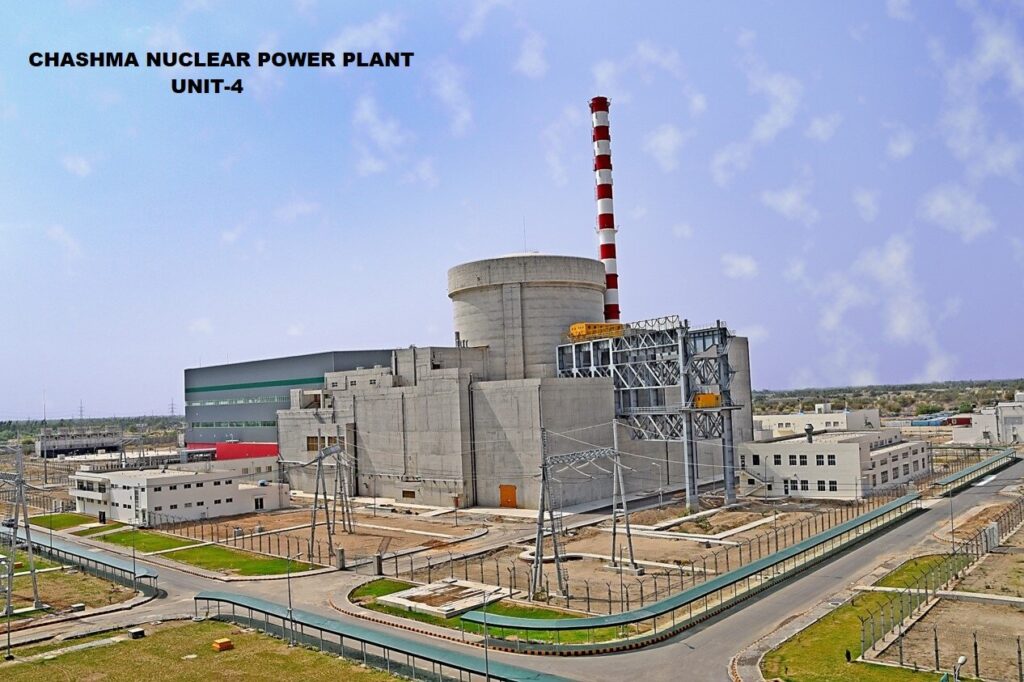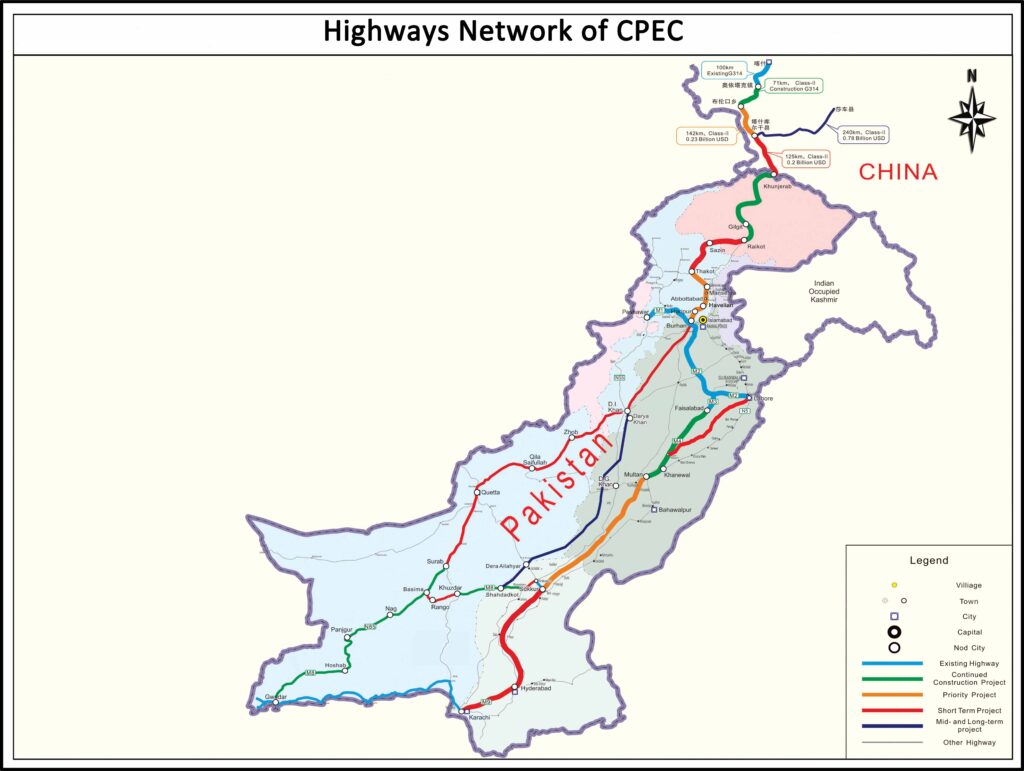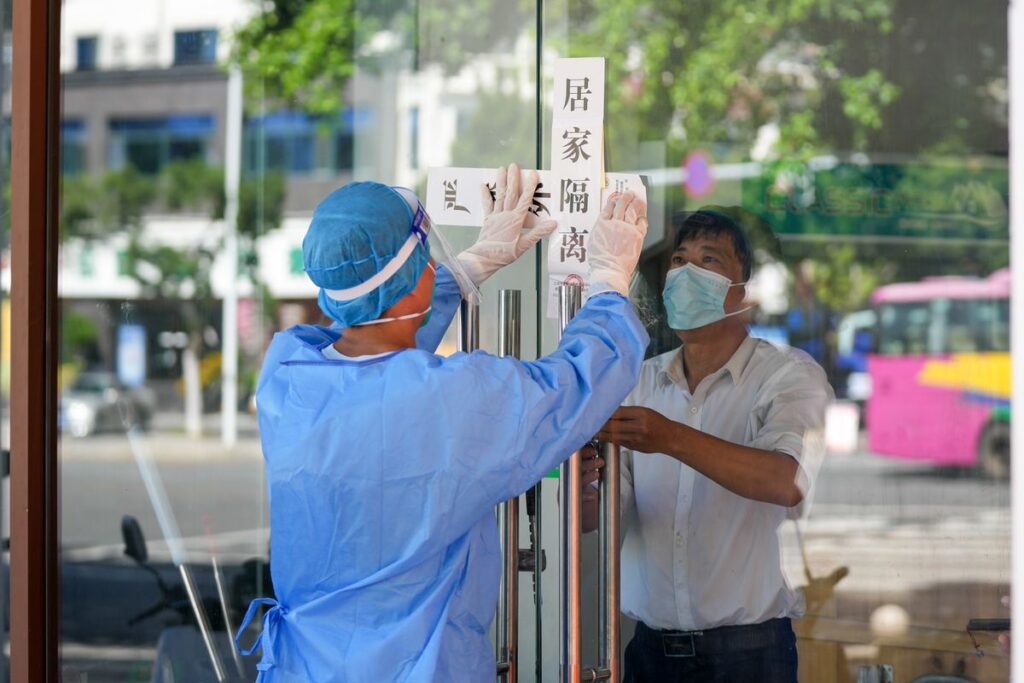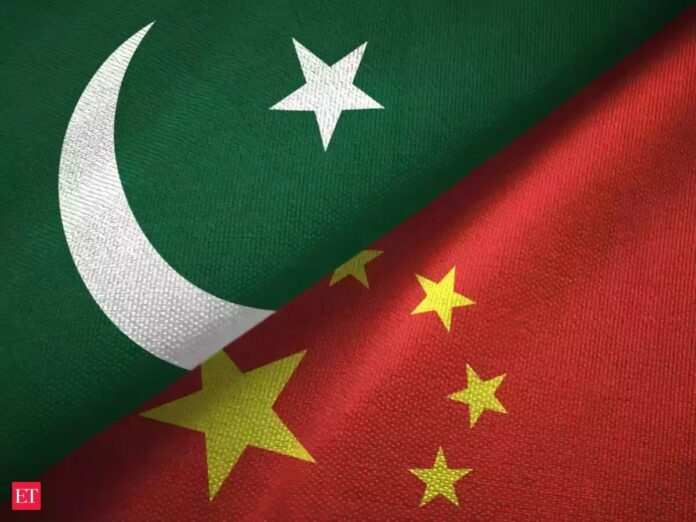H.E. Mr. Li Bijian – Consul General of China
Excellency, distinguished guests, it’s a really great honor and privilege for me to speak here at the Karachi Council on Foreign Relations (KCFR) platform, the prestigious place and the house of the father of nation, so I feel very proud and privileged to meet you. Well, I would give a short speech and then we will have more interactions. If you have any questions, I will answer. We are leading the change in the world; the rivalry of bigger powers is happening and the so-called competition between the bigger powers now becomes very tense. The war between Russia and Ukraine started by someone else, we don’t know but that had more problems. The world economy, geopolitics are changing, the forces beyond Asia are trying to create a different environment here. So far, we are seen that the nations in Asia are more or less roughly sticking together. I call it the spirit of Asia, unity, security, development, and a win-win cooperation. All the countries in Asia, they have their clear-cut policies to analyze and adjust to the changing geopolitical landscape and better relations between themselves in such a situation.
In Asia we have a few perks, some of those perks are also open for Western countries like APEC, like ASEAN plus platforms and course we have our own coalition, ad-hoc coalition mechanism like Shanghai Cooperation Organization (SCO) of which Pakistan is a member, India is also a member and we have some other, more regional cooperation mechanism. These are going very well and all the major players, stakeholders are putting the livelihood of our people first. I think that every government in this region is very clear about what is happening and what is their mission. So, in this region few developments we have to have in mind; number one that economic development is our most important task. In Asia, we have a long history of colonialism. On the social media, if you follow closely, very heated discussions are on the good sides and bad sides of colonialism. Some would say we should leave with this one and the champion with this one, and some others say that the colonialism created a lot of problems, aftermath for all the Asian countries. China as one of the most populous countries in Asia and the world, we are trying to bring the whole bloc together and to live peacefully with each other and to apply a future of win-win cooperation. We are leading in many aspects, leading the efforts of putting all the stakeholders together and we are trying to normalize our relations with the Indians, we have severe problems but we’re trying to normalize and both countries are most populous nations. In terms of population, I think India next year will overtake China being the largest population in the world. So, the whole Asia, the future lies in the hands of the major players.

Pakistan is the most influential country in Islamic world. You have almost 220 million population and despite some current problems, you have a robust economic future. Right now, you have some problems but I always say that Pakistan has the most resilient private sector. I have met a lot of private businessmen; they are very strong and they’re working on their own and they know how to do their business. You have such a large number of diaspora, and every year they send back more than $30 billion of remittances back home. Pakistan is a country that has almost all the major industries and you can depend on yourself, and most importantly you have a very young population. So, the human population dividend is so big for Pakistan, I always say that Pakistan is the future of Asia. If we do better, Pakistan will fly even higher and of course in Asia, we have so many problems, border issues, territory disputes, water disputes, and relations among some country is not good. North Korea, South Korea, we have a peninsula problem, nuclear issue.
China and Japan’s relations also got some problems and you come to Central Asia, they are also facing some economic and political issues. Afghanistan last year had a very big changeover but we are looking forward Pakistan will develop in the right in direction and China in collaboration with Pakistan is trying to help Pakistan or Afghanistan to come up with good governance and good plan to develop Afghanistan. If looking around the whole Asia, economically, we are doing much better and politically while we’re facing some instability, but if we put the region as a whole, it is stabilized. If you look a few decades back, I think that it is developing in the right direction and as far as the relation between the countries is concerned, I think that unity cooperation, win-win spirit is taking roots, this is a huge encouragement for the players of this region to come together, to face the situation. People were talking much a few years back that this is the future of Asia or the era of Asia, but I think that the future is yet to be seen with Asia rising even more. Asia will play an even greater role in the international or regional affairs.
Distinguished guests, this morning I was invited to attend a function, organized by KEC Karachi Editor’s Club to celebrate the 73rdAnniversary of the founding of the People’s Republic of China. Because of pandemic and security issue, this year, the consulate was not allowed to host a national day reception. This is the third time that we could not do that. So, I’m sorry that we couldn’t invite all of you to that function. But in today’s function, I gave them some of my assessment about the bilateral relations under the situation on some specific issues like Xinjiang, the question of Taiwan and the debt trap, are some of those issues which are always reached by reporters and journalists. But here on this platform, I just want to give you some understanding and updates about how CPEC is going on.
CPEC has been initiated in 2015 by the Chinese President Xi Jinping and since then, the government has been working very closely and the first phase has already been completed, now we are in the second phase. What have we done in the first phase? In the first phase, at the request of your then-federal government, that came to help us to solve the energy shortage. We came up with a very concerted and integrated plan to solve this problem. Basically, in the energy sector, of course some projects also in the nuclear field had been started many years back but we had more projects for the first phase of CPEC. The most striking feature of the first phase of CPEC is (G2G) Government to Government and in the energy sector of the projects follow the G2G program, even though most of these projects have been constructed or completed or implemented by the companies, but that is within the government’s directives.

In the energy sector, we came up in a very big way in five areas. Number one is the thermal power plants that is most quick and efficient way to help you to solve the energy shortage. So, we consecutively built the Qasim Power Plant, Hub Power Plant, Sahiwal Power Plant, and Jamshoro Power Plant and most importantly that Chinese companies take part into the development of Tharparkar coal, your own coal resources and for the thermal power plants, some of these power plants are based on imported coal resources. But now because of the uncertainty of the international price, nobody knows that the international market price for coal is so high. Now the coal imported from South Africa or Indonesia is going up to $300 per pound, but at the very beginning it was around just $50, $100, $150 a pound. So, there’s a big increase and this adds a lot of problems for the IPPs, but all these power plants, despite the pandemic, despite the security issue, the Chinese side is coming in a big way and we completed the projects. The thermal power plants are doing very well and perhaps you may raise questions regarding Tharparkar to which I will give you more answers but right now I will just discuss something here, the second area is hydropower. Hydropower is green but it requires a huge investment and the construction takes a longer time. So even after seven years, we have only one of them, Karot Hydropower which has just been completed and is open into operation while the rest are still under construction.
The rest five to seven hydro power projects by the Chinese companies are still going on, and it will take more time to complete. After the completion, that will add more energy to your national grid. The third area is nuclear power plants, right here in Karachi, K2-K3 Nuclear Power Plant, in the past almost three years ago when I arrived in my office, effort was focused on the construction of this K2-K3 and we have to see that the two power plants have officially opened to commercial operation and generating green energy and supply to your national grid. The fourth area is windmills, if you travel to the inner part of Sindh province, especially near to Hyderabad, Dadu, which we call as wind corridors, the wind farms, and the Chinese companies invest hugely, these are also doing very well. Finally, are the solar power plants, this becomes very catchy and really special to farmers. Wind power is okay but for solar power you have to sort out how to solve the storage issue, and how to solve the peak hour and the low hour, day and the night. We are still facing some global technical issues, but so far, the solar power plants have been functioning very well in Pakistan. We put all these five sectors together and now the total of electricity capacity is much more than the actual demand by Pakistan. That means you have surplus electricity if we put all these power plants in operation, so this is good news.

The first phase, besides energy sector, we worked very closely with Pakistan to solve transportation problem. Some of major projects have been completed like M5, the Super Highway connecting Multan to Sukkur and the upgrade of the second phase of Karakoram Highway. We also have a very big project which is Metro in Lahore, the Orange Line is also completed and in the transportation sector, we have completed the Eastbay Expressway in Gwadar and of course some others. The third area is the telecommunication, there is ongoing collaboration between Chinese companies and Pakistan and it is going very well. We have completed the first fiber line connecting China and Pakistan via Karakoram highways that is now in operation.
So, in the first phase we have some other projects going on, but I would say that not many people know achievements of the first phase. There are so many achievements but because of the negative propaganda by some forces, the image of CPEC has been tarnished. They portray a different situation, they have different narratives but I’m frank enough to tell my audience and all Pakistani sisters and brothers that we did a great job and Pakistan really will really get a huge benefit from the CPEC projects. Some people have mentioned about Gwadar, this morning in my speech on that celebration, I introduced about the debt trap which is a fabricated term used by some forces in the West intentionally to tarnish our investment. We have a figure, maybe the calculation is different, but according to our calculation by the end of last year, the total external debt of Pakistan is over $120 billion roughly maybe more or less but we have that figure. About this $120 billion, less than 10% is owned by China, and the rest 90% of debt of Pakistan is owned by the western countries, especially the financial institutions. I will ask, if this 10% is called a debt trap, what is the rest 90%? I will tell you that the finance by Chinese side to carry out these projects mainly has these three categories, number one is government aid that is to say the Chinese government will provide all the finance free of charge. We have been doing that in many fields. Some generals know that we have very close cooperation in the security defense fields and some of those projects has been completed through this format. I just mentioned about some civilian projects going on in Gwadar, the Gwadar New International Airport one of the biggest investments and one of the major airports in Pakistan which will be commissioned next year hopefully in August, including the Eastbay Expressway, the Training Institute, the Middle School and the furnished hospital. We have added more projects like water sanitation plant which will produce 5000 tons of water on daily basis, this project is now under construction. So, all these projects are financed by Chinese government and use Chinese government aid. This is one category, another is preferential loans provided by Chinese financial institutions with the government’s support. The interest rate of preferential loans is always under 2%, and not more than 2%. The more interest over 2% will be covered by the government so the government will compensate for the difference of the interest rate. The main project has been implemented through this way and finally, is the commercial loans. Commercial loans are not provided by the government but by the financial institutions and banks. So that is the three ways through which we are financing the CPEC projects. Of course, besides the Chinese government, Chinese companies are also financing. We are also working closely with the third party, like Qasim Power Plant is actually not a joint dimension, but it’s a tripartite project, China, Pakistan and a Qatar company. China only has some shares on it and the Qatar Company controls the main shares of the project. There are so many different ways of financing.
So, for the first phase, it’s going very well, I hope that you can spread this information to your audience, to your people about how CPEC is really doing a great job, doing very well. Some people intentionally sabotage, or create a negative image. Now we are in the second phase. The main feature would be B2B, Business to business, the first phase was G2G, but the second would be B2B, focusing on industry, manufacturing, agriculture and the socio-economic progress of the local people. For the second phase, we just started last year and we have the Joint Working Group and Joint Commission of CPEC which has held 11 meetings and is guiding the operations for the second phase. Both sides are doing very well very well, and ever since the inception of CPEC, the government of Pakistan in different times have been very cooperative and supported earnestly to implement CPEC projects. We are really grateful, very much grateful to the Pakistan side for implementation of this project

So, besides CPEC, I want to give you some information about the COVID control situation. Everybody knows that, the whole world, most countries are opening up and US has even announced that they are COVID free, but actually COVID has been with us for more than two years and caused huge problems and especially severely affected the service industry and tourism. Tourism has been badly affected and the international travel was influenced very badly and the people are very much worried about the situation, how China will act, especially the business community. The business community of Pakistan because through the years they’ve been doing business with their counterparts in China’s counterpart, and now because of COVID they cannot travel to China, and they are very concerned about the situation. They want to go back to meet their partners and specially to visit the manufacturing plants. They have been doing online meetings, but online meetings are not a factory to solve problems, so how to apply for a visa and wait for China to relax COVID-control measures like quarantine. Currently when you travel to China, number one, visa. For visas, we are open. My consulate, the embassy in Islamabad and our consulate in Lahore are open for applying for visas. In the last two years, one of the biggest issues was with the education sector. Before the pandemic, roughly we had nearly 40,000 Pakistani students studying in China. But soon after the occurrence of COVID most of the students came back and in the past more than two years, they complained a lot to my office, to the embassy. Now, online education is not good, especially for the students who are majoring in engineering, they have to do the opportunities. Online you cannot do that. So, they were pressing us to give them visa and to let them return to their campus and continue education. We have opened the student visa just a few months ago. Applying for a visa is not a problem. If you apply and meet the requirements, you will get a visa. At the consulate, we provide one week service for the degree seeking visitors. If you wish to travel to China, send me a message, even WhatsApp, you have my card and I’ll try to help you to get the visa. After being given the visa, you have to book the tickets. Because of COVID, the flights have greatly reduced. In the past, China had daily flights connecting Islamabad, Karachi and Beijing, but now reduced to once a week. PIA has resumed the flights, one flight from Islamabad to Chengdu and one to Xi’an. China Southern Airlines has also resumed flights once a week. So, booking air tickets is now also taking time because the flights connecting the two countries are very few. Of course, you can fly to the Gulf states like Dubai, the Qatar in transit to travel to Guangzhou and some other cities in China.
But buying tickets is always a problem. Thirdly, you have the visa, you have the tickets and you travel to China, you have to face seven days quarantine. You have to stay in a hotel for seven days and if you travel to Beijing, it’ll acquire three days more quarantine. That is 10 days. Of course, this one’s already much relaxed. In the high days of COVID last year, the average quarantine time was three weeks, 21 days. But now we have reduced it to seven days. It’s much relaxed, but still the business community in Pakistan complains to me that we don’t have that much time to waste, to stay in the hotel for seven days. What can I do, what do I do? Just isolation in the hotel, sleeping. That is really troublesome. So, there’s hope that maybe the quarantine protection and prevention methods will be further relaxed based on overall improvement of the COVID situation.

Mr. Bijian highlighted reasons why China is unable to open up completely right now because of its 1.4 billion population, of which roughly 300 million comprise senior citizens over 60 years old who can become main victims of COVID. China has a tradition, a philosophy to look after its senior population. We respect them and wish them to live for 100 years, 150 years, as long as possible to enjoy life. These people who are retired worked really hard for building our nation. So now we cannot give up this big population of 300 million people. If we open up, maybe all of them would be infected and could die. This price we cannot pay and cannot take this risk to open up. That is why we have this quarantine prevention and protection measures in place. We have to find ways to fix this efficiently and in a transparent, scientific manner. I can talk a lot on this topic but it will take a long time.
I thank you all for you to come here and listen to me. I liked the exchange, picked up your questions and gave you frank answers to help you to better understand the bilateral relations and CPEC.
Thank you, thank you very much.





